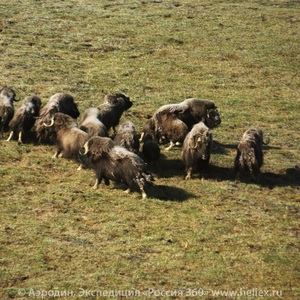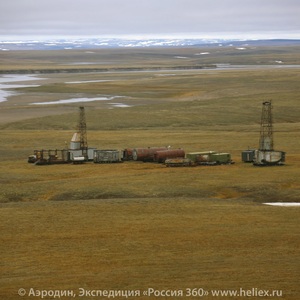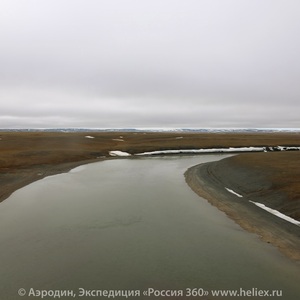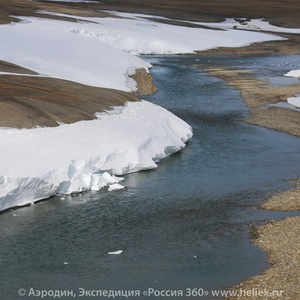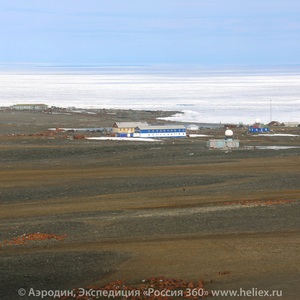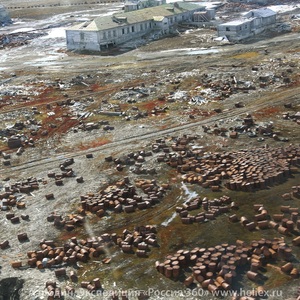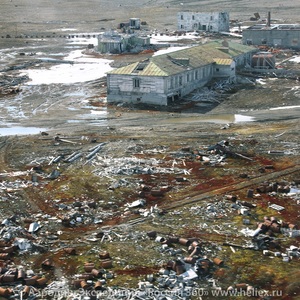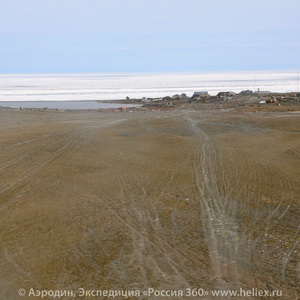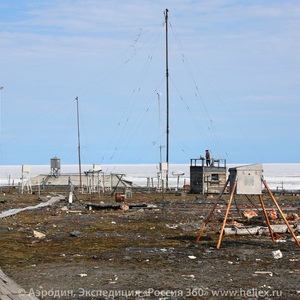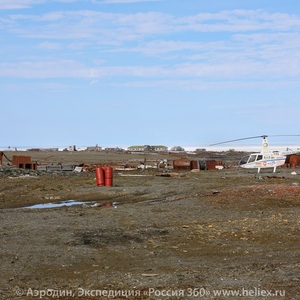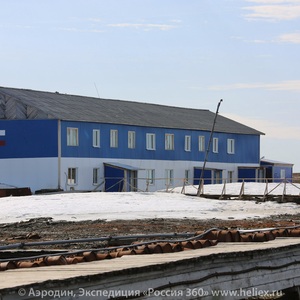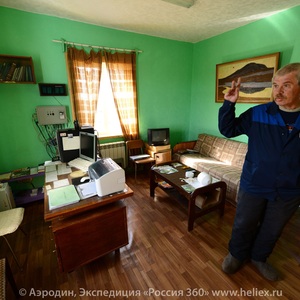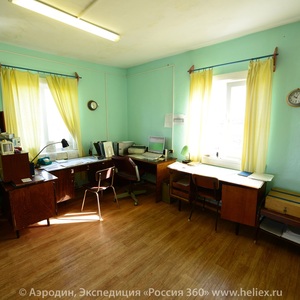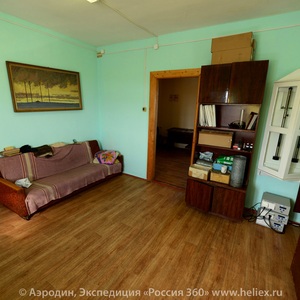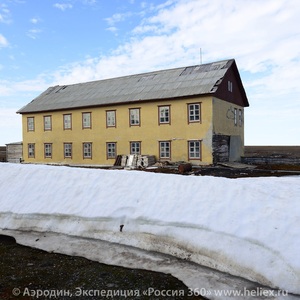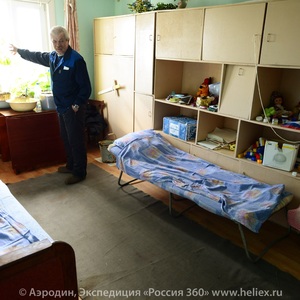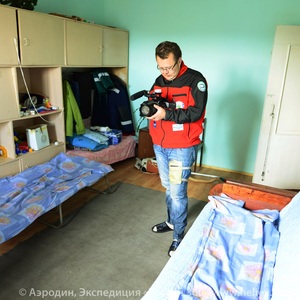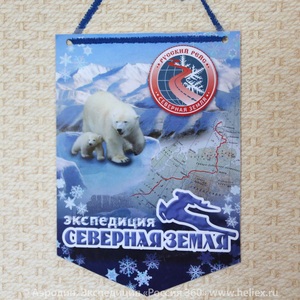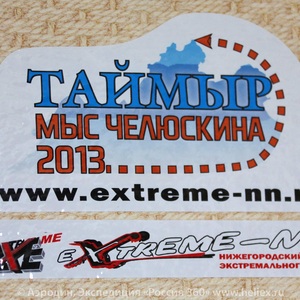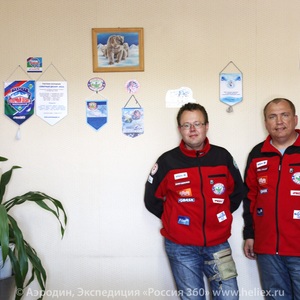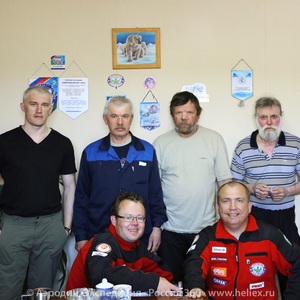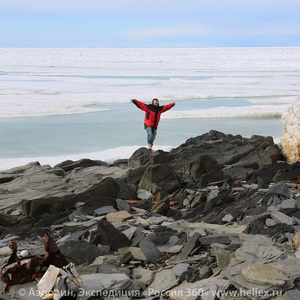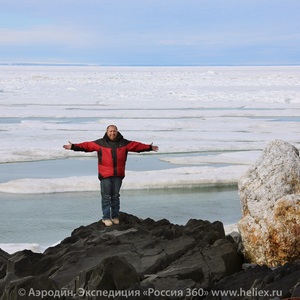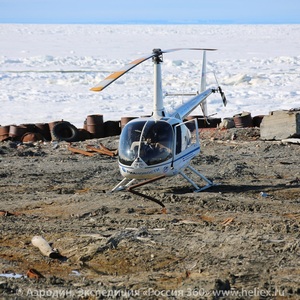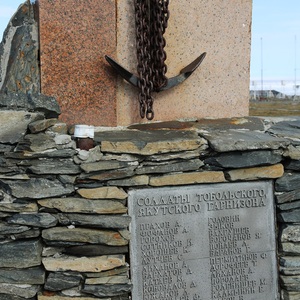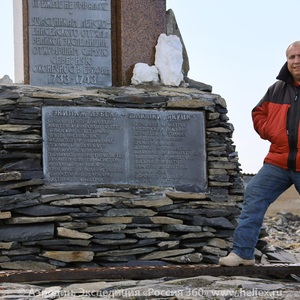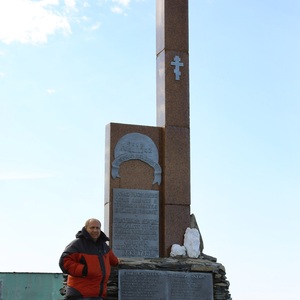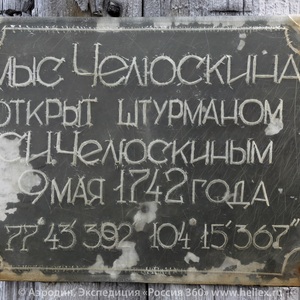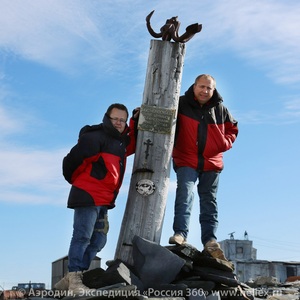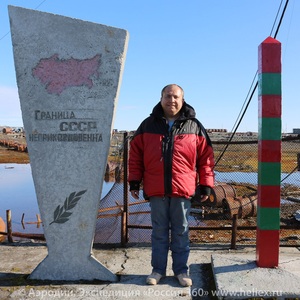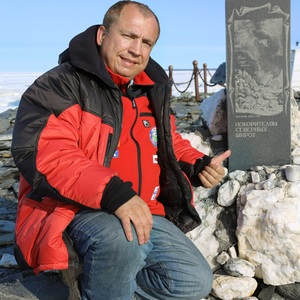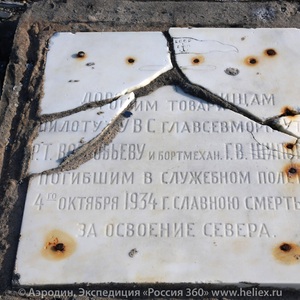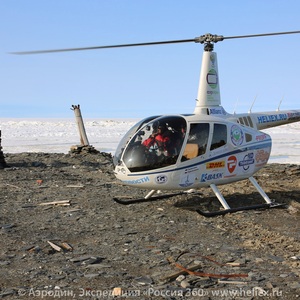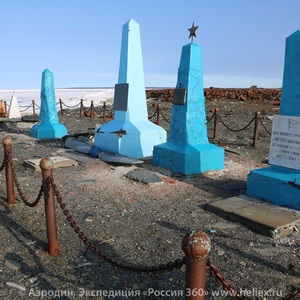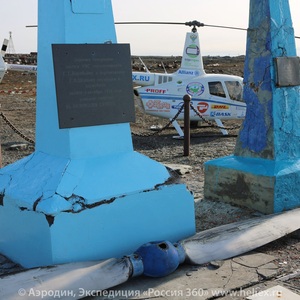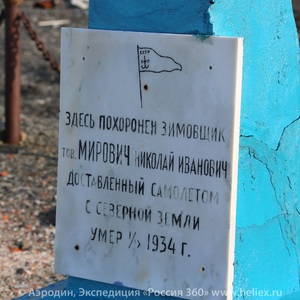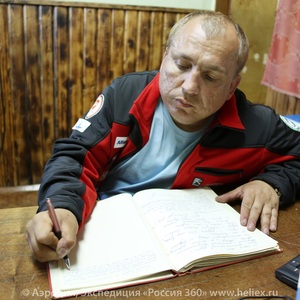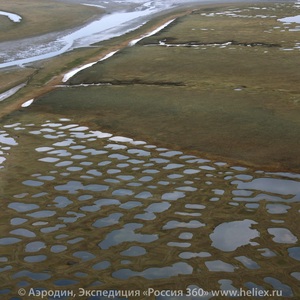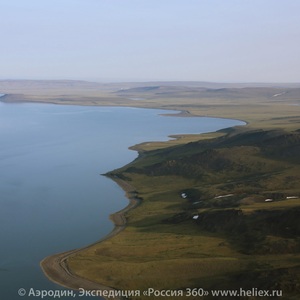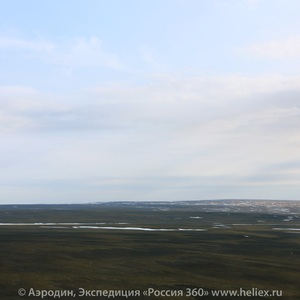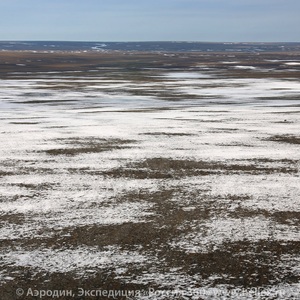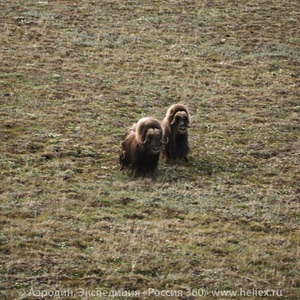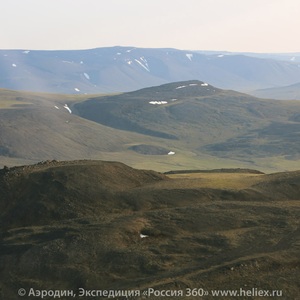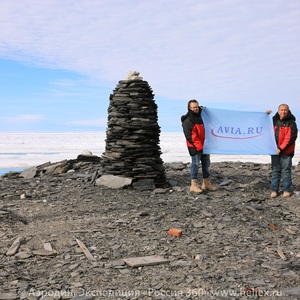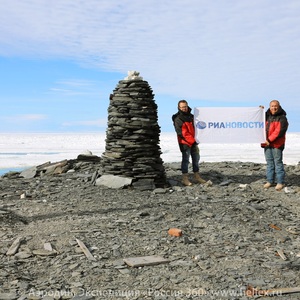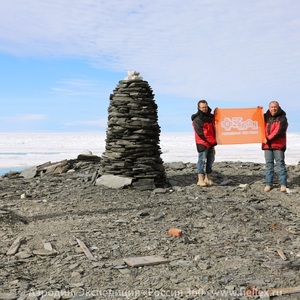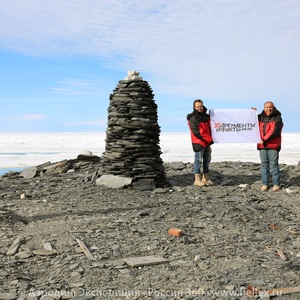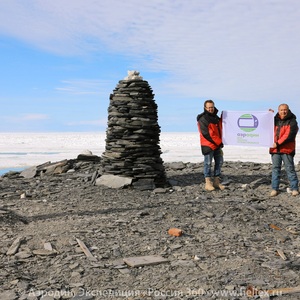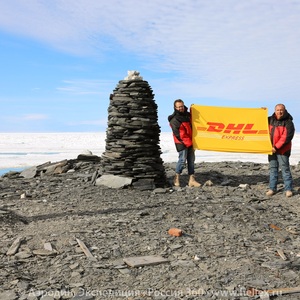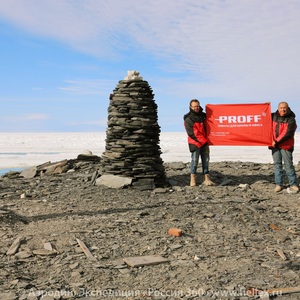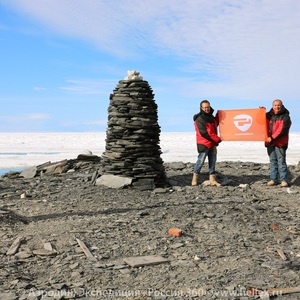It’s hard to call “waking u” what we had. You wake u from your slee. But this was not a dream, but an alarm drowse, mixed with the vigilance, alarm nonetheless. Before climbing out of the helicoter and thinking about what to do next, we woke u several times, but dense fog was still there – we were traed by nature. 8 hours has already assed since the moment we landed on this iece of land surrounded by marshes, next to the waters of the Gafner Fjord Gulf. Near 10:00 it started to lighten bit by bit. Not to clear, namely to ighten. But that itself gave us some hoe. At times it seemed that the fog faded – we started to see the shores of the bay back and forth. But in 5 minutes everything was covered again. However, the fog showed shreds, and it meant there was hoe! Another hour assed in a continuous gazing through the fog. I felt that there were no clouds – like yesterday – and the sun was shining directly on the ground fog, slowly dissolving it. By 11:00, we realized that although the fog was still there, but we can see much further to the south than to the north and west, towards the water. Right, it couldn’t be any other way. If this fog came from the water, our task was to run away from there as quickly as ossible, in the direction where the visibility is better.
We finally decide to act. I’ll just have to fly a few feet over the ground in a slow ace and we will move south to get out of the fog. Indeed, after 5 minutes of flight, and my heart was joyous. There was really no fog, and the sun was eeking out from the clouds. But the bottom edge is still quite low. The tos of landscae are buried in the clouds, and only lowlands are clear. But we need to somehow fly around the ill-fated bay. We don’t dare to go west – there is fog. And the east ath is blocked with mountains in the clouds. I have made ??an attemt to jum in one lace, but there the shreds of clouds hung u to the hills and I decided to get out to the lowlands again. For the first time we saw a small herd of musk oxen. I’ve read that these shaggy bison are found in the vast of Taimyr, but for the first time we saw them in erson. We made hoto and video.
However, we have to get away. We have been roaming for twenty minutes. What if we try to fly around the mountains along the bay shoreline? We made an attemt. The rocks there eak off right into the water. Their to is in the clouds, and at the bottom there is water and the horizon is not visible. It’s very dangerous. And then I turn around. No assage. I look at the height ma on the Garmin Aera 795 device. If we fly to the south, where the relief is descending, along the channel of the river, where you can go to the north, around the bay from the east. We decided to take this course – it seems this is what we need. Indeed, we find the channel, surrounded by high hills. We dive into the valley of the river and fly over it in a few meters above the surface. The sides of the hill are hided by the ragged clouds. We’re flying in a corridor, or rather in the tunnel. The track is wagging following twists and turns the channel. I’m afraid to cut – just walking u and see the wiss of the clouds. But gradually the hills become lower, and the farther we moved north, the smaller the clouds. Here it is – the isthmus cove, which we are trying to fly around for the second day. Further there is a hollow, and I’m beginning to feel that we are not running from the weather, but really flying! Hooray, we did it! :-) My heart is hay and my drowse after the hard night fades away. The weather is becoming like it was redicted by my rogram. For the most art there is sun with a rare, and already it is clear that the dearting, clouds.
There is another mountain range in front of us. I am not even thinking about flying through it. Besides, there are still clouds. We went around the array from the east, luckily there is the assage. It’s strange, but the further north we go the more signs of resence (maybe revious) of human we see. There is abandoned machinery, some non-residential basis of unclear who, the traces of the technology is everywhere. I read somewhere that the tundra is recovering from the destruction of its thin surface layer of moss, but very slowly. The trace of one rover assing can be seen u to 30 years! The natural metabolism is too slow here. So it is quite ossible that we see the 20-30-year-old traces. Seems that’s really so.
Overcoming the last hill on the river bed – there are almost no clouds here. We cross mountain range over and see the end of the world! Here it is – the land’s bend, and then, as far as an eye can see – Arctic Ocean covered in ice! I wonder why is there ices? It seems that by this time they should already gone away… Another 10 minutes of flight, and we cast a glance at the structures of the Chelyuskin. They are many and they are often scattered far aart. And between them … My God! Between them is literally the sea of rusty iron! There are thousands, tens of thousands of emty rusty fuel barrels. Some bent rods, the remains of the abandoned vehicles. Chelyuskin Station, which I had romantic notions about from the books and movies, is giant garbage of trash, iron, abandoned buildings, masts and antennae, and other remnants of civilization. Where to land? From the air, it’s hard to tell where the life on this dum is, where functioning buildings are and where are eole. After a coule of las, we decide to land where we think the life is. Indeed, we see a man who waves a – right here, he says.
We land. It turned out we landed on the weather station. Anyway, we were looking for this lace. Now we disconnect. We were aroached by big bearded men – just like in the 60’s movies about wintering. Greet each other, get to know. They are meteorologists. I see ZIL car comes. It is the border guards came. We greet them as well. We lanned to show them the ass, but they do not need it. First, they have been warned about our arrival, and secondly, we have been already checked in Dixon and another check on our route. The local border guards have other obligations – to denote the resence of Russian and oversee the northern sea route.
7 eole are living and working at the weather station. We see the station itself – the working lace. It’s comfortable and clean. Different aliances are standing everywhere. Everywhere are hea blocks for weather balloons. We take ictures, show interest in devices. Then we are invited to the aartment building. This is a two-level building of the relatively fresh aearance, but only the first floor is occuied. Aartments on the second floor are free. The head of the weather station shows their homes. He shows us the room where the beds are reared for us – they were waiting for us yesterday.
We talk about our adventures in the tundra. Finally, we go to the saloon – the common area for the entire team. The table is served, and I can’t forget the fish laying there. It looks so good – red and white. One of the stuff tells us they catch it themselves. This stuff we have of lenty. I’m asking them about the suly and nutrition. Not bad. They do not comlain. Yet, the salary is ridiculously small. Many of them, just to somehow earn money, combine multile osts. We are shocked to know the salaries of winterings – 3 to 6 thousand rubles a month! There are, of course, some allowances and rates, length of service, and more. But the head of the station, olar exlorer and winterer with years of exerience, half of his life sent at various stations and wintering, has 40,000! Is it big or small? Judge for yourself …
On the wall in the common room there is the real collection of souvenirs from various exeditions. We see ennants of the teams arrived here by cars, all-terrain vehicles, boats hovercraft. We hang our ennant on the wall and stick logo of our exedition. There will be a memory of us as well – we were first who came here in a single flight on a light single-engine helicoter! There is a tradition – to leave memorials signs about ourselves. So, reader, shake into your head – if you decide to arrange an exedition, try to make ennants and stickers. It will be not just a memory of you, but also a material evidence of your stay. Besides, it will be fun for you – to see the history of travels on a kind of wall of fame.
After tea and delicious fish, meteorologists show their domain. This is the weather station itself and devices on it. From here weather balloons are launched twice a day. They tell in great details about every device. We are doing a anorama and take ictures. We go to the Arctic Conquerors monument. Make a hoto shoot as well. Every oint of interest here is imortant to us… But time is running out, and we have stock only few hours left. Before the evening we have to escae from the cae, to avoid the bad weather. We’re eering into the horizon and see the creeing blackness. The forecast was correct.
In conclusion, we suggest to meteorologists to use our satellite hone. They also have one, but they almost have no minutes left – there is no money on the account. We wait until all make calls, and say goodbye – we fly to another art of the cae, where stand the monuments and memorials on the edge of the earth. This lace is near to the border ost. This ost is the goal of our journey – we want to take ictures of them. We take off and after a few minutes land on the edge of the land, a few meters from the border ost, cairn of stones and ancient illar with inscritions.
I remember them from hotograhs. At one time, looking at them, I did not believe that I can get here. And not just get – I’ll fly here! We are installing our hoto and video equiment. We see two militaries with wives coming in our direction – the wives are young women. These are the same guys who drove u to the lace of our landing on the weather station a few hours ago. They resent their wives, we exchange jokes. We are welcomed – usually only olar bears ay a visit here, so all travelers are welcomed. The girls are taking ictures together and searately near the helicoter. We offer our hone to them too, knowing that you can’t use the working hone much. Girls are leased to have this oortunity, and we are leased we have heled somehow.
Meanwhile, we went to the monuments and make our ictures at the edge of the land: shoot anorama, fasten to the old tin-lated ole late of our exedition, take ictures, and make hoto series with the flags of our artners and sonsors. Finally, I call to our Headquarters, and we record the audio message from the crew from Cheliuskin Cae.
Guys suggest we fly a bit further – over the dum (it is dum everywhere here!) – there is one more sot. There are monuments and mini graveyard of dead olar lanes and crews. We fly there and take ictures and shoot again. Now, it seem, there are no laces of interest in Chelyuskin not visited by us. The weather is just wonderful. The sun, the sky is cloudless, just north-west has a small dark sot. Here it is – a window of good weather, which forecasts redicted. It is strange to see the ice on the ocean, as far as an eye can reach. But as long as there is ice, there are no olar bears. They now hunt in the ices. But as soon as the ice eaks – bears return to the mainland, and then the Chelyuskin inhabitants have to be alert. In the Arctic, many times there have been cases when leaving the building ended in tragedy….
Head of the outost – a young lieutenant Ilya – calls us to his outost. We go and see again on the office wall ennants of different exeditions and add our own to them. It turns on the outost has book of records for many decades. It’s old, now coming to an end – Ilya shows us it. Very interesting! There are all tyes of eole, all tyes of exeditions – all left memorable notes. Ilya offers to us write something as well. It’s a great honor to make our marks in this great book, as the first records were left in the 70’s. We thank Ilya and go to take ictures near the symbolic border ost, built during the Soviet era. Well, at least the sign is still there. New weren’t built. Finally, welcoming chief of the outost leads us to his home – for tea. We tried to refuse, but he insisted. Tea was a comlete meal that was reared by his wife Olga. We are very glad to have such kind of of attention and hositality of the hosts, and even a little embarrassed, as we cannot reay. We ing nothing. The helicoter is very small, and it is loaded to the limit….
After lunch and tea, we say goodbye to Ilya and Olga. Thanks a lot guys. Not only for the hositality. It is these young eole, uon whom now holds both life and Russia as a whole. We take the letter to take it to the nearest ost office in the village where we will be. We go back to the helicoter, check the gear, equiment, and make sure that the fuel is enough. Esecially, with this great weather will not have to hide in the valleys and riverbeds – go directly through the mountains! We look at the sky – the half is already darkened. It’s a sign that we have to go back. However, we did everything. We met eole, took ictures – it’s time to go south….
Taking off, doing the final fly around the settlement. I fly over the sea to be even further north of the northern ti of the land. We are doing the final settlement hotos from the air and head to Cae Sablera. It’s a little less than 2 hours to fly directly there. The flight was calm. It was nice to see how the ucoming darkness gradually receded until it disaeared behind the mountains. It will come here as well too, but near the night. And to Lake Taimyr, where we’re going now, it will reach only tomorrow. But in the morning we leave the Cae Sablera as well. We land at the fishermen base exactly at 20:00. Just at the time when we romised to return and fishermen say this with a smile, did we wait in tundra just to arrive exactly on time? There was already warm, +22 * C – a real resort comared to 5 * C in Chelyuskin, near the natural ice refrigerator. However, this has its drawbacks – the infernal mosquitoes. We have not seen any flying bastards on Chelyuskin. So we had to use the cans of esticides again.
The men reared the sou and we had dinner, talking about different toics. I, keeing my favorite ost in mind, climbed back on it and set the satellite terminal. This time the connection worked worse. But I managed to make sure that the south of Taimyr weather tomorrow is all fine. Together with Victor we decided that we can byass Hatanga. First, there is a roblem with the fact that some airort manager has left for the holiday, and with him we had an agreement about the fuel. Second, we wanted to somehow catch u the seed of our movement. It’s too bad that we could not get to Hatanga. There we have a volunteer Onega Poova. But, unfortunately, circumstances did not allow us to send a day to stay in the village. We’re going to fly from Sablera right to the next aragrah of the route – to the village Saskylah, where want to refuel and continue the flight to Tiksi. If only time was enough! Time is working against us – it goes to minus. Here, it’s UTC +8, but is Saskylahe it’s UTC +10….
At the fishermen base in addition to the house, where the fishermen send the night, there is another house – they call it a guesthouse. There’s a half dozen of beds – all designed for a large comany. here send the night the Mi-8 ilots, from time to time rich tourists come for fishing (and others cannot afford to ay for the Mi-8). In short, there are the conditions for sending the night. But there is no electricity. Guys sometimes turn on the generator when they need it, but mostly do without it. Well, we have a owerful battery Tracer with us. We connect it to the converter 12/120 volts, and to it – our charge-bag. The converter oerates at it’s limit, the wire from the battery is heated, but the gadgets are charging. How good to be cautious traveler! :-)
Finally, we go to slee. It was just an immense day, which included two days with almost sleeless night in the tundra and a lot of imressions from visits to Cae Cheliuskin. We are tired to the limits of ossible. But tomorrow we don’t have long time to slee. We had to take off tomorrow in the morning, to avoid the bad weather. Esecially since we have such an ambitious lans – to fly from Sablera right to Tiksi in one day. So now – slee!
P.S. Result of the day — 610 kilometers in 3:44 flight hours
Фотографии с флагами партнеров и спонсоров
Мыс Челюскин


